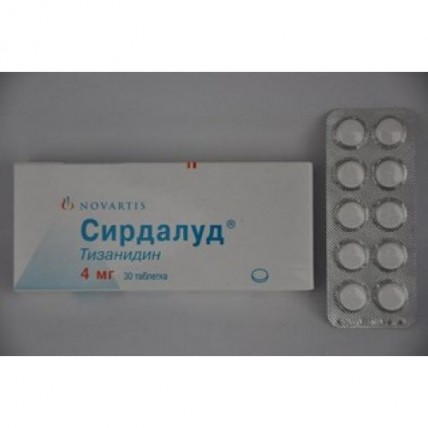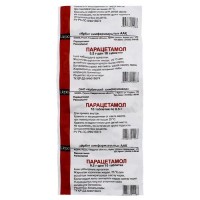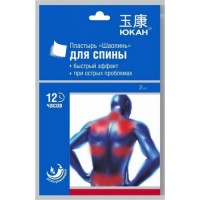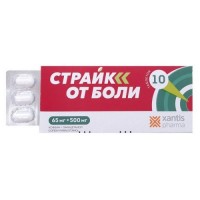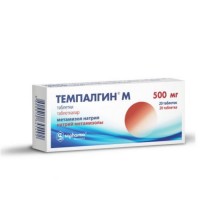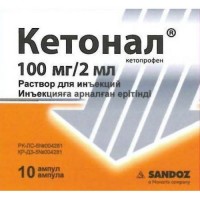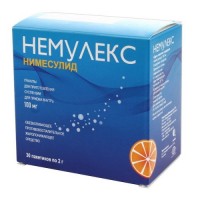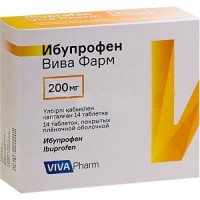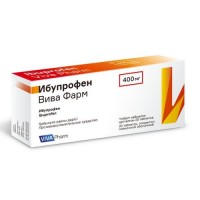Sirdalud 4 mg (30 tablets)
- $14.50
Out Of Stock
The instruction for medical use
of SIRDALUD (SIRDALUD) medicine
the Trade name
of SIRDALUD
the International unlicensed
name Tizanidin Lekarstvennaya a form
of the Tablet of 2 mg, 4 mg
Structure
One tablet contains
active agent - tizanidin in the form of a hydrochloride of 2 mg or 4 mg
excipients: silicon dioxide colloidal anhydrous, stearic acid, cellulose microcrystalline, lactose anhydrous.
The description
of the Tablet of 2 mg – round, flat, with slanted edges, with a notch for a break and marking of OZ
of the Tablet of 4 mg – round, flat, with slanted edges, with two crossing notches for a break and marking of RL
Pharmacotherapeutic group
Other muscle relaxants of the central action.
ATC M03 BX02 code
the Pharmacological
Pharmacokinetics Tizanidin properties is soaked up quickly and almost completely. The maximum concentration in blood plasma is reached approximately in 1 hour after administration of drug. Because of the significant metabolism at the first passing through a liver the average value of bioavailability is about 34%.
The average value of volume of distribution in the period of an equilibrium fortune at intravenous administration of drug makes 2.6 l/kg. Linking with proteins of blood plasma makes 30%. In the range of doses from 4 to 20 mg the pharmacokinetics of a tizanidin has linear character. Considering low interindividual variability of pharmacokinetic parameters (in particular, such as maximum concentration / Cmax/and area under a curve concentration time / AUC/), at reception of a tizanidin inside it is possible to predict reliably values of its concentration in blood plasma. A floor does not influence pharmacokinetic parameters of a tizanidin.
Tizanidin is quickly and substantially metabolized in a liver. Metabolites are inactive.
The average value of elimination half-life of a tizanidin is 2-4 h of a system blood-groove. Drug is removed mainly by kidneys (about 70% of a dose) in the form of metabolites, only about 2.7% fall to the share of not changed substance.
Features of pharmacokinetics at separate groups of patients
At patients with a renal failure (clearance of creatinine less than 25 ml/min.) the average value of the maximum concentration in blood plasma exceeds this indicator at healthy volunteers twice, and final elimination half-life is extended approximately till 14 o'clock therefore the area under a curve 'concentration time' (AUC) increases on average by 6 times.
Influence of food
the Concomitant use of food does not influence pharmacokinetics of a tizanidin. Though the value of the maximum concentration increases on one third, it is considered that it is not clinically significant. The significant effect on absorption (AUC) is not noted.
A pharmacodynamics
Tizanidin - a relaxant of skeletal muscles of the central action. The main point of application of its action is in a spinal cord. Stimulating presynaptic alfa2-receptors, it suppresses release of exciting amino acids which stimulate receptors to N-methyl-D-aspartate (NMDA receptors). Thereof at the level of interneuronels of a spinal cord there is a suppression of polisinaptichesky transfer of excitement. As this mechanism is responsible for an excess muscle tone, at its suppression the muscle tone decreases. In addition to myorelaxation properties, tizanidin renders also central moderate analgeziruyushchy effect.
Indications
Painful muscular spasm:
- connected with static and functional diseases of a backbone (cervical and lumbar syndromes)
- after surgical interventions, for example, concerning hernia of an intervertebral disk or an osteoarthrosis of a hip joint.
A spasm of skeletal muscles in neurologic diseases:
- multiple sclerosis, chronic myelipathy, degenerative diseases of a spinal cord, disturbance of cerebral circulation and cerebral palsy.
The route of administration and doses
At a painful muscular spasm appoint 2 or 4 mg three times a day. In hard cases before going to bed it is possible to accept 2 or 4 mg in addition.
At the spasm of skeletal muscles caused by neurologic diseases, the dose should be selected individually. The initial daily dose should not exceed 6 mg divided into 3 receptions. The dose can be raised gradually, on 2-4 mg, with intervals from 3-4 to 7 days. Usually optimum therapeutic effect is reached at the daily dose from 12 to 24 mg divided into 3 or 4 receptions at regular intervals. It is not necessary to exceed a dose of 36 mg a day.
Use for children
Experience of use of drug for children is limited. Sirdalud's use for children is not recommended.
Use for patients of advanced age
It is necessary to be careful at Sirdalud's use for elderly patients.
Use for patients with a renal failure
Treatment of patients with a renal failure (clearance of creatinine less than 25 ml/min.) is recommended to begin with a dose 2 mg once a day. Increase in a dose is carried out by small steps, taking into account shipping and efficiency. If it is necessary to gain more significant effect, it is recommended to increase at first the dose appointed 1 time a day then increase frequency rate of appointment.
Side effects
frequency Assessment: very often ³ 10%, are frequent - from ³ 1% to <>
At reception of the small doses recommended for stopping of a painful muscular spasm, side effects arise seldom, are usually mild and is passing.
- it is frequent: drowsiness, weakness, dizziness, dryness in a mouth, arterial hypotension, bradycardia
- it is rare: nausea, gastrointestinal disorders, passing increase in activity of hepatic transaminases, muscle weakness, insomnia, sleep disorders, hallucinations
- it is very rare: an acute hepatitis
At reception of higher doses recommended for spasticity treatment, above-mentioned side effects arise more often and are more significant, however they seldom are so heavy that treatment had to be interrupted.
Contraindications
- hypersensitivity to a tizanidin or to any other component of drug
- the profound abnormal liver functions
- simultaneous use of a tizanidin with fluvoksaminy
Medicinal interactions
Simultaneous use of a tizanidin with fluvoksaminy, CYP450 1A2 inhibitor contraindicated.
Hypotension, perhaps, arises along with drowsiness, dizziness and reduced psychomotor work. The care is necessary at use of a tizanidin with other CYP1A2 inhibitors, such as antiarrhytmic drugs (Amiodaronum, mekseletin, propafenon), Cimetidinum, ftorkhinolona (enoksatsin, pefloksatsin, ciprofloxacin, norfloxacin), rofekoksib, oral contraceptives and tiklopidin.
Co-administration of Sirdalud with antihypertensive drugs, including diuretic, can sometimes cause arterial hypotension and bradycardia.
Alcohol or sedative drugs can strengthen sedative action of Sirdalud.
Special instructions
It was reported about cases of the abnormal liver functions connected with tizanidiny, however at use of a daily dose up to 12 mg these cases were noted seldom. In this regard it is recommended to control functional hepatic trials in the first 4 months of treatment at those patients to whom it is appointed tizanidin in a daily dose of 12 mg and above once a month and also when the clinical signs allowing to assume an abnormal liver function are observed, - such as inexplicable nausea, anorexia, fatigue. In case the ALT and nuclear Heating Plant levels in serum with firmness exceed the upper bound of norm by 3 times and more, Sirdalud's use should be stopped.
Use during the periods of pregnancy and a lactation
should not be applied Sirdalud during pregnancy unless the potential advantage exceeds possible risk. Tizanidin is allocated with breast milk in insignificant quantities, nevertheless, to the women nursing children, drug should not be used.
Influence on ability to drive the car and to work with mechanisms
the Patient at whom drowsiness is noted it is necessary to recommend to refrain from types of the works demanding high concentration of attention and fast reaction, for example, of driving of vehicles or work with cars and mechanisms.
Overdose
Symptoms: nausea, vomiting, arterial hypotension, dizziness, drowsiness, miosis, concern, disturbance of breath, lump.
Treatment: for removal of drug from an organism the repeated prescribing of activated carbon is recommended. The artificial diuresis also, perhaps, will accelerate Sirdalud's removal. Further carry out symptomatic treatment.
A form of release and packing
of the Tablet of 2 mg on 30 pieces in cardboard packing, with the instruction for medical use.
Tablets of 4 mg on 30 pieces in cardboard packing, with the instruction for medical use.
To Store storage conditions at a temperature not above +25ºС.
To store out of children's reach!
The period of storage
of 5 years
Drug should not be used after the term noted on packing.
Prescription status
According to the prescription
the Producer Novartis Urunleri, Turkey
for
Novartis Pharm AG Basel, Switzerland.
To develop
of SIRDALUD (SIRDALUD) medicine
the Trade name
of SIRDALUD
the International unlicensed
name Tizanidin Lekarstvennaya a form
of the Tablet of 2 mg, 4 mg
Structure
One tablet contains
active agent - tizanidin in the form of a hydrochloride of 2 mg or 4 mg
excipients: silicon dioxide colloidal anhydrous, stearic acid, cellulose microcrystalline, lactose anhydrous.
The description
of the Tablet of 2 mg – round, flat, with slanted edges, with a notch for a break and marking of OZ
of the Tablet of 4 mg – round, flat, with slanted edges, with two crossing notches for a break and marking of RL
Pharmacotherapeutic group
Other muscle relaxants of the central action.
ATC M03 BX02 code
the Pharmacological
Pharmacokinetics Tizanidin properties is soaked up quickly and almost completely. The maximum concentration in blood plasma is reached approximately in 1 hour after administration of drug. Because of the significant metabolism at the first passing through a liver the average value of bioavailability is about 34%.
The average value of volume of distribution in the period of an equilibrium fortune at intravenous administration of drug makes 2.6 l/kg. Linking with proteins of blood plasma makes 30%. In the range of doses from 4 to 20 mg the pharmacokinetics of a tizanidin has linear character. Considering low interindividual variability of pharmacokinetic parameters (in particular, such as maximum concentration / Cmax/and area under a curve concentration time / AUC/), at reception of a tizanidin inside it is possible to predict reliably values of its concentration in blood plasma. A floor does not influence pharmacokinetic parameters of a tizanidin.
Tizanidin is quickly and substantially metabolized in a liver. Metabolites are inactive.
The average value of elimination half-life of a tizanidin is 2-4 h of a system blood-groove. Drug is removed mainly by kidneys (about 70% of a dose) in the form of metabolites, only about 2.7% fall to the share of not changed substance.
Features of pharmacokinetics at separate groups of patients
At patients with a renal failure (clearance of creatinine less than 25 ml/min.) the average value of the maximum concentration in blood plasma exceeds this indicator at healthy volunteers twice, and final elimination half-life is extended approximately till 14 o'clock therefore the area under a curve 'concentration time' (AUC) increases on average by 6 times.
Influence of food
the Concomitant use of food does not influence pharmacokinetics of a tizanidin. Though the value of the maximum concentration increases on one third, it is considered that it is not clinically significant. The significant effect on absorption (AUC) is not noted.
A pharmacodynamics
Tizanidin - a relaxant of skeletal muscles of the central action. The main point of application of its action is in a spinal cord. Stimulating presynaptic alfa2-receptors, it suppresses release of exciting amino acids which stimulate receptors to N-methyl-D-aspartate (NMDA receptors). Thereof at the level of interneuronels of a spinal cord there is a suppression of polisinaptichesky transfer of excitement. As this mechanism is responsible for an excess muscle tone, at its suppression the muscle tone decreases. In addition to myorelaxation properties, tizanidin renders also central moderate analgeziruyushchy effect.
Indications
Painful muscular spasm:
- connected with static and functional diseases of a backbone (cervical and lumbar syndromes)
- after surgical interventions, for example, concerning hernia of an intervertebral disk or an osteoarthrosis of a hip joint.
A spasm of skeletal muscles in neurologic diseases:
- multiple sclerosis, chronic myelipathy, degenerative diseases of a spinal cord, disturbance of cerebral circulation and cerebral palsy.
The route of administration and doses
At a painful muscular spasm appoint 2 or 4 mg three times a day. In hard cases before going to bed it is possible to accept 2 or 4 mg in addition.
At the spasm of skeletal muscles caused by neurologic diseases, the dose should be selected individually. The initial daily dose should not exceed 6 mg divided into 3 receptions. The dose can be raised gradually, on 2-4 mg, with intervals from 3-4 to 7 days. Usually optimum therapeutic effect is reached at the daily dose from 12 to 24 mg divided into 3 or 4 receptions at regular intervals. It is not necessary to exceed a dose of 36 mg a day.
Use for children
Experience of use of drug for children is limited. Sirdalud's use for children is not recommended.
Use for patients of advanced age
It is necessary to be careful at Sirdalud's use for elderly patients.
Use for patients with a renal failure
Treatment of patients with a renal failure (clearance of creatinine less than 25 ml/min.) is recommended to begin with a dose 2 mg once a day. Increase in a dose is carried out by small steps, taking into account shipping and efficiency. If it is necessary to gain more significant effect, it is recommended to increase at first the dose appointed 1 time a day then increase frequency rate of appointment.
Side effects
frequency Assessment: very often ³ 10%, are frequent - from ³ 1% to <>
At reception of the small doses recommended for stopping of a painful muscular spasm, side effects arise seldom, are usually mild and is passing.
- it is frequent: drowsiness, weakness, dizziness, dryness in a mouth, arterial hypotension, bradycardia
- it is rare: nausea, gastrointestinal disorders, passing increase in activity of hepatic transaminases, muscle weakness, insomnia, sleep disorders, hallucinations
- it is very rare: an acute hepatitis
At reception of higher doses recommended for spasticity treatment, above-mentioned side effects arise more often and are more significant, however they seldom are so heavy that treatment had to be interrupted.
Contraindications
- hypersensitivity to a tizanidin or to any other component of drug
- the profound abnormal liver functions
- simultaneous use of a tizanidin with fluvoksaminy
Medicinal interactions
Simultaneous use of a tizanidin with fluvoksaminy, CYP450 1A2 inhibitor contraindicated.
Hypotension, perhaps, arises along with drowsiness, dizziness and reduced psychomotor work. The care is necessary at use of a tizanidin with other CYP1A2 inhibitors, such as antiarrhytmic drugs (Amiodaronum, mekseletin, propafenon), Cimetidinum, ftorkhinolona (enoksatsin, pefloksatsin, ciprofloxacin, norfloxacin), rofekoksib, oral contraceptives and tiklopidin.
Co-administration of Sirdalud with antihypertensive drugs, including diuretic, can sometimes cause arterial hypotension and bradycardia.
Alcohol or sedative drugs can strengthen sedative action of Sirdalud.
Special instructions
It was reported about cases of the abnormal liver functions connected with tizanidiny, however at use of a daily dose up to 12 mg these cases were noted seldom. In this regard it is recommended to control functional hepatic trials in the first 4 months of treatment at those patients to whom it is appointed tizanidin in a daily dose of 12 mg and above once a month and also when the clinical signs allowing to assume an abnormal liver function are observed, - such as inexplicable nausea, anorexia, fatigue. In case the ALT and nuclear Heating Plant levels in serum with firmness exceed the upper bound of norm by 3 times and more, Sirdalud's use should be stopped.
Use during the periods of pregnancy and a lactation
should not be applied Sirdalud during pregnancy unless the potential advantage exceeds possible risk. Tizanidin is allocated with breast milk in insignificant quantities, nevertheless, to the women nursing children, drug should not be used.
Influence on ability to drive the car and to work with mechanisms
the Patient at whom drowsiness is noted it is necessary to recommend to refrain from types of the works demanding high concentration of attention and fast reaction, for example, of driving of vehicles or work with cars and mechanisms.
Overdose
Symptoms: nausea, vomiting, arterial hypotension, dizziness, drowsiness, miosis, concern, disturbance of breath, lump.
Treatment: for removal of drug from an organism the repeated prescribing of activated carbon is recommended. The artificial diuresis also, perhaps, will accelerate Sirdalud's removal. Further carry out symptomatic treatment.
A form of release and packing
of the Tablet of 2 mg on 30 pieces in cardboard packing, with the instruction for medical use.
Tablets of 4 mg on 30 pieces in cardboard packing, with the instruction for medical use.
To Store storage conditions at a temperature not above +25ºС.
To store out of children's reach!
The period of storage
of 5 years
Drug should not be used after the term noted on packing.
Prescription status
According to the prescription
the Producer Novartis Urunleri, Turkey
for
Novartis Pharm AG Basel, Switzerland.
To develop
